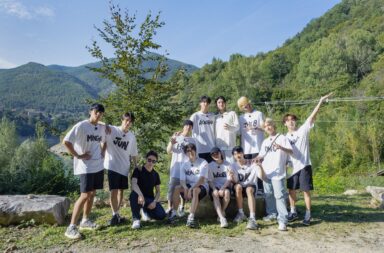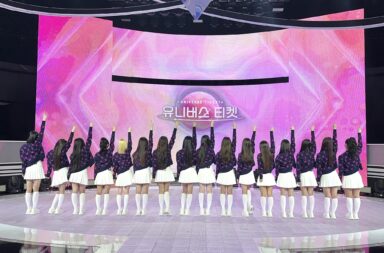
Launched in 2005, YouTube has become an essential platform for K-pop, and now, for Korean broadcasting stations as well. The viewership for major terrestrial broadcasting stations has fallen throughout the past few years, while the usage of YouTube has risen sharply in Korea. The result is broadcasting stations turning to YouTube, with very successful examples being Channel Fifteen from tvN and Studio LuluLala from JTBC. Thus, broadcasting stations have started to use YouTube as a platform to upload new content as it offers an international reach and flexibility that traditional TV cannot.
Terrestrial broadcasting stations such as MBC, SBS, and KBS cannot command the high viewership that they used to. In the early to mid-2000s, the broadcasting stations would reach viewership of over 42% for especially popular dramas such as Dae Jang Geum. However, average viewership has fallen, and not just for dramas. The combined viewership of KBS, SBS, and MBC reached 62.23% in 2000; in 2018, less than twenty years later, the viewership halved to 33.4%. The reasons behind the falling viewership of the terrestrial broadcasting stations are multiple.
First, the prominence of paid TV channels such as tvN and JTBC have increased. They continue to churn out popular variety shows and dramas, one prime example being the hit drama The World of the Married from JTBC earlier this year.

The second reason, the one more relevant to this article, is the rise of streaming platforms easily accessible on smartphones. Platforms like Netflix and YouTube have gained an undeniably big presence in Korea and pose a threat to the big three channels and paid TV channels alike. In fact, YouTube has become the most used smartphone app in Korea, surpassing local messaging app Kakaotalk, and search engine Naver. In 2019, Koreans spent almost 50 billion minutes on YouTube, an increase from 36 billion minutes from 2018. In a 2018 government poll, YouTube Creator was in the top five list of careers that elementary school students wanted later in life.
Fans of K-pop already know that YouTube is a significant platform. All K-pop artists have at least one official channel run by their labels where content, ranging from MVs to behind-the-scenes, is uploaded. In the past several years, idols have also started opening up personal channels on YouTube. There is an ever-growing list of idols trying their hand at becoming a YouTube Creator on a global platform that allows for more personal and creative communication with their fans.
It is unsurprising then, that broadcasting stations have also turned to YouTube to upload new styles and types of content. Broadcasting stations already have their own channels where clips of dramas and variety shows aired on TV are uploaded. However, broadcasting stations have started to open up YouTube channels for content created solely for the platform. Unfortunately for terrestrial broadcasters MBC, SBS, and KBS, channels tvN and JTBC seem to have the upper hand here as well. Channel Fifteen is run by tvN and dedicated mostly to content from variety producer Na Young-seok. Studio Lululala, from JTBC, has several channels dedicated to different variety shows.
Na, affectionately known as Na PD, was already a famous variety show producer known for the first season of One Night Two Days, Three Meals a Day, and Grandpas/Youth/Sisters Over Flowers. Na PD’s own career trajectory, from his start at KBS, move to tvN, and his current success on YouTube, reflects the changing trends in the broadcasting industry. His channel, Channel Fifteen, under tvN, was launched in May of 2019 and since then has amassed 1.97 million subscribers. Fun fact: the subscriber count may have been higher if Na PD had not made a far-fetched promise to send frequent collaborators Lee Su-geun and Eun Ji-won to the moon as a milestone marker for reaching a million subscribers. Once that milestone was hit, Na PD held a live broadcast begging viewers to unsubscribe temporarily so that he did not have to fulfill this costly, highly unrealistic promise.
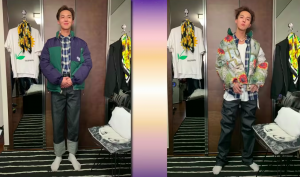
Mapo Fashionista, which aired once a week on Channel Fifteen earlier this year, is a great example of Na PD’s signature variety style being adapted for YouTube. The series features friends P.O. of Block B and Mino of Winner facing off against each other in outfit-styling battles. In general, the episodes follow a similar format: the two are given a series of challenges each episode, for which they have to style themselves or the guests for the episode. A picture of each outfit is taken, the models’ faces are blurred out, and then the photo is uploaded to an Instagram story where viewers are asked to vote in a poll for their favourite outfit. Each episode is split into two videos between fifteen and seventeen minutes, and both parts were uploaded to the channel on the same day. The simple format allows the chemistry between the two longtime friends to shine; the variety-savvy idols spend the series bickering and critiquing each other’s fashion styles. Na PD’s chemistry with P.O. and Mino is undeniably a part of the humour, as he is unexpectedly made to be a model for one of the episodes. His frequent banter with the cast, which in itself has become a signature for his shows, does not disappoint.
Mapo Fashionista, as a fashion show, took clear advantage of its platform. Though Korean broadcasting channels often censor out brands that are not sponsoring the show in question, P.O. and Mino were free to discuss the brands that they were wearing, and logos were shown on screen as well. Although the format of the show could have felt repetitive, and would definitely have felt that way if it were to be stretched into a 90-minute episode, the short runtime and diversity of challenges stopped viewers from getting bored. Having a show starring two K-pop idols on a platform with a huge international reach was also a smart move. Subtitles in nine different languages were also added to the videos, thereby eliminating some of the obstacles international fans face.
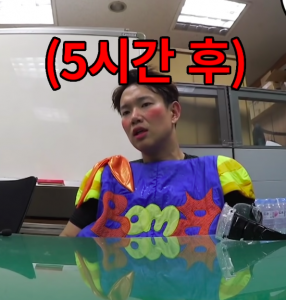
If tvN has Channel Fifteen, JTBC has its digital studio, Studio LuluLala. The studio has its own YouTube channel where diverse series are uploaded, but two of its most popular series, Workman and Wassup Man, have their own channels. Workman features former JTBC news anchor Jang Sung-kyu as he tries out different jobs. Park Joon-hyung of first generation idol group g.o.d. is the star of Wassup Man, as he visits different places in Korea to eat and try out diverse activities. Videos on both channels usually run less than ten minutes and combined with fast-paced editing make for a quick, but humorous watch.
The channel for Workman currently has 3.82 million subscribers, and videos are uploaded on a weekly basis with Jang trying out a new job each week. For example, one of the most recent videos is Jang working at a car wash, with Rain as a guest. The two learn how to properly wash a car from the real workers, then spend several hours cleaning cars that come to the shop.
Wassup Man, on the other hand, boasts an equally impressive 2.24 million subscribers and is set to return with a season two this upcoming week. The channel, pre-COVID-19, had Park exploring different neighbourhoods in Seoul and around Korea while interacting with random passersby he meets along the way.
Despite the different themes, both channels have managed to gain popularity through a new style of editing and humour not found on TV variety shows. Though Jang and Park are undoubtedly hilarious in their own ways, the editing of the video contributes to much of the amusement. Sound effects, graphics, and captions serve as clever commentary from the staff behind the camera, which often disagrees with and pokes fun at Jang and Park. The end result is a fast-paced video that seems to be a back-and-forth between the people on screen and the staff behind the camera. The short runtime means that editors often ruthlessly cut off the video when people are mid-conversation, much as if they had been interrupted by another person. Not even U-know Yunho is exempt, as he is cut off abruptly while promoting his solo debut album True Colors on an episode of Wassup Man last year. Studio LuluLala, with Wassup Man and Workman, offers a new kind of variety show fit for YouTube.
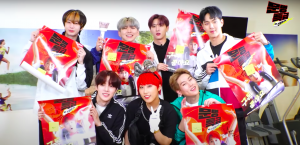
Broadcasting stations turning to YouTube have resulted in the rise of some unlikely stars. One is Pengsoo, from EBS, who dreams of becoming a great YouTube creator itself. Another is Jaejae, whose real name is Lee Eun-jae. Jaejae is the host of MMTG from SBS, where she interviews various celebrities, including K-pop idols. She refers to herself as “half celebrity, half ordinary person”, because despite being a YouTube star, she still works a day job as a producer at SBS. However, Jaejae and her bright red hair have gained a following, and she has even had two fansigns featuring members of NCT 127 and Monsta X.
Broadcasting stations, especially tvN and JTBC, are already reaping the benefits of utilizing YouTube to host new content. The global platform is here to stay, and its full effects on the broadcasting industry in Korea remain to be seen. However, there is no doubt that it will continue to host an endless amount of content, from K-pop idols to broadcasting stations alike.
(Tech Crunch, Reuters, Naver, Business of Apps, Yonhap News Agency, The Korea Herald, Elle, YouTube [1][2][3][4][5]. Images via SBS, JYP, JTBC, tvN)
